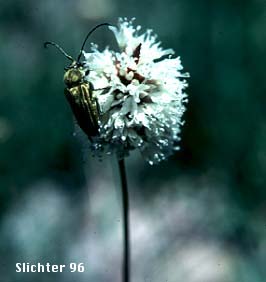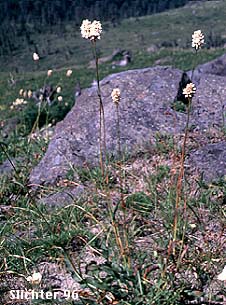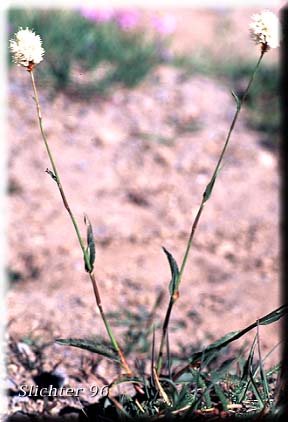

 Characteristics:
Characteristics:
American bistort is an erect perennial arising 30-60 cm from a thick tuber. The basla leaves are long petiolate and not jointed to the stem. The leaf blade is oblong-lanceolate or wider, to 15 cm long. The stipules are brownish and 3-6 cm long. There are a few lanceolate stem leaves, reduced in size upwards on the stem.
The inflorescence is a dense terminal raceme, spike-like, from 3-6 cm longand 1-2 cm wide. It is densely white-flowered as seen in the photo above.
American bistort is a montane species found in moist or swampy meadows, streambanks, or alpine slopes.
American bistort is found from southern Alaska to southern California, east to Alberta, Montana, and New Mexico.
In the Columbia River Gorge, it may be found at higher elevations (2800'-4400') surrounding the higher peaks at the west end of the gorge (Larch Mt., Silver Star Mt., etc.
